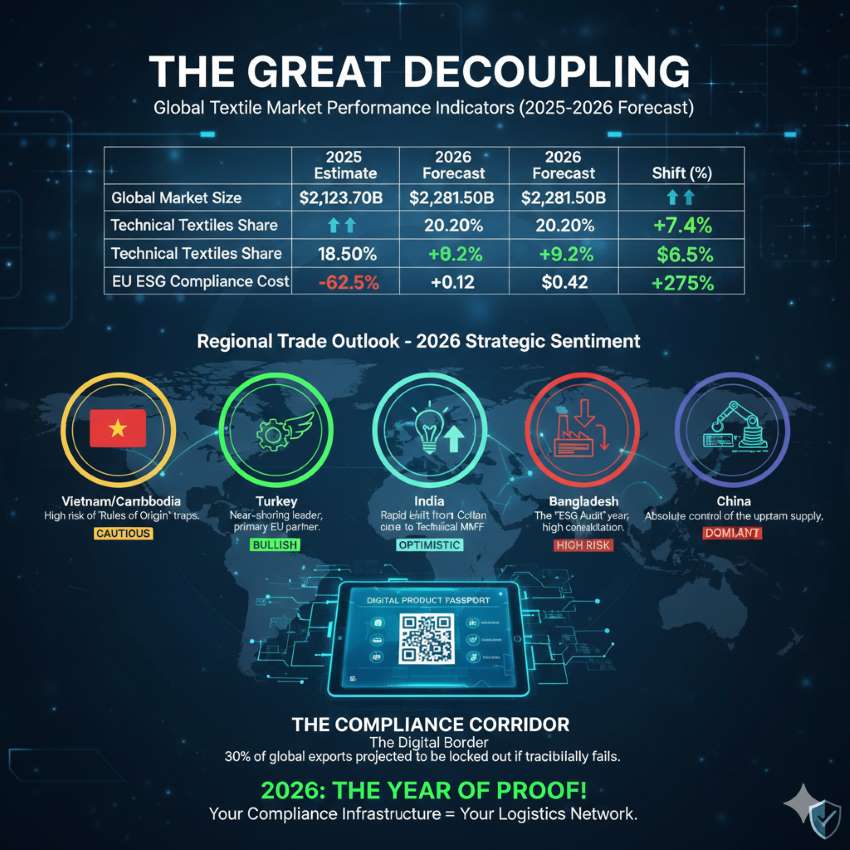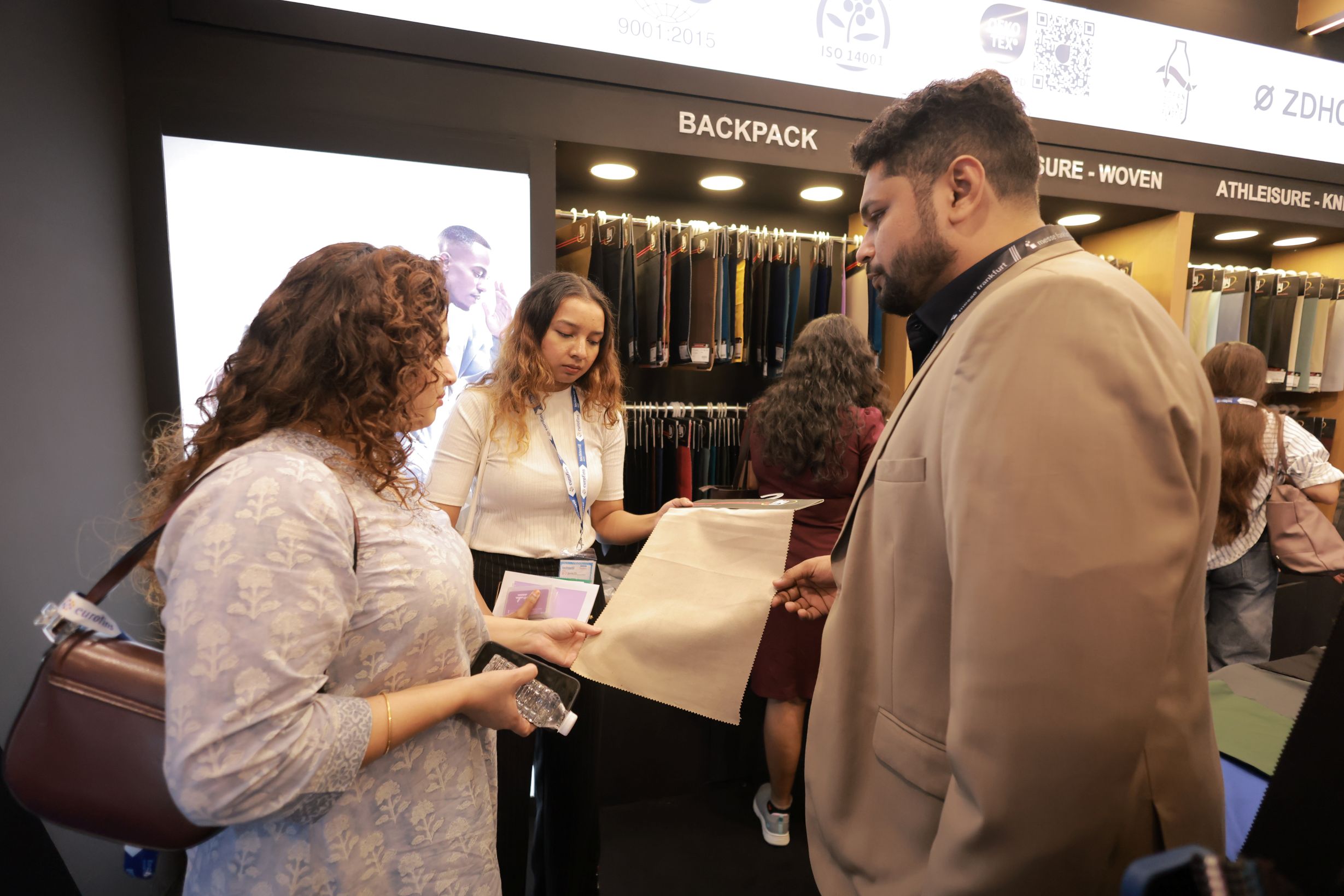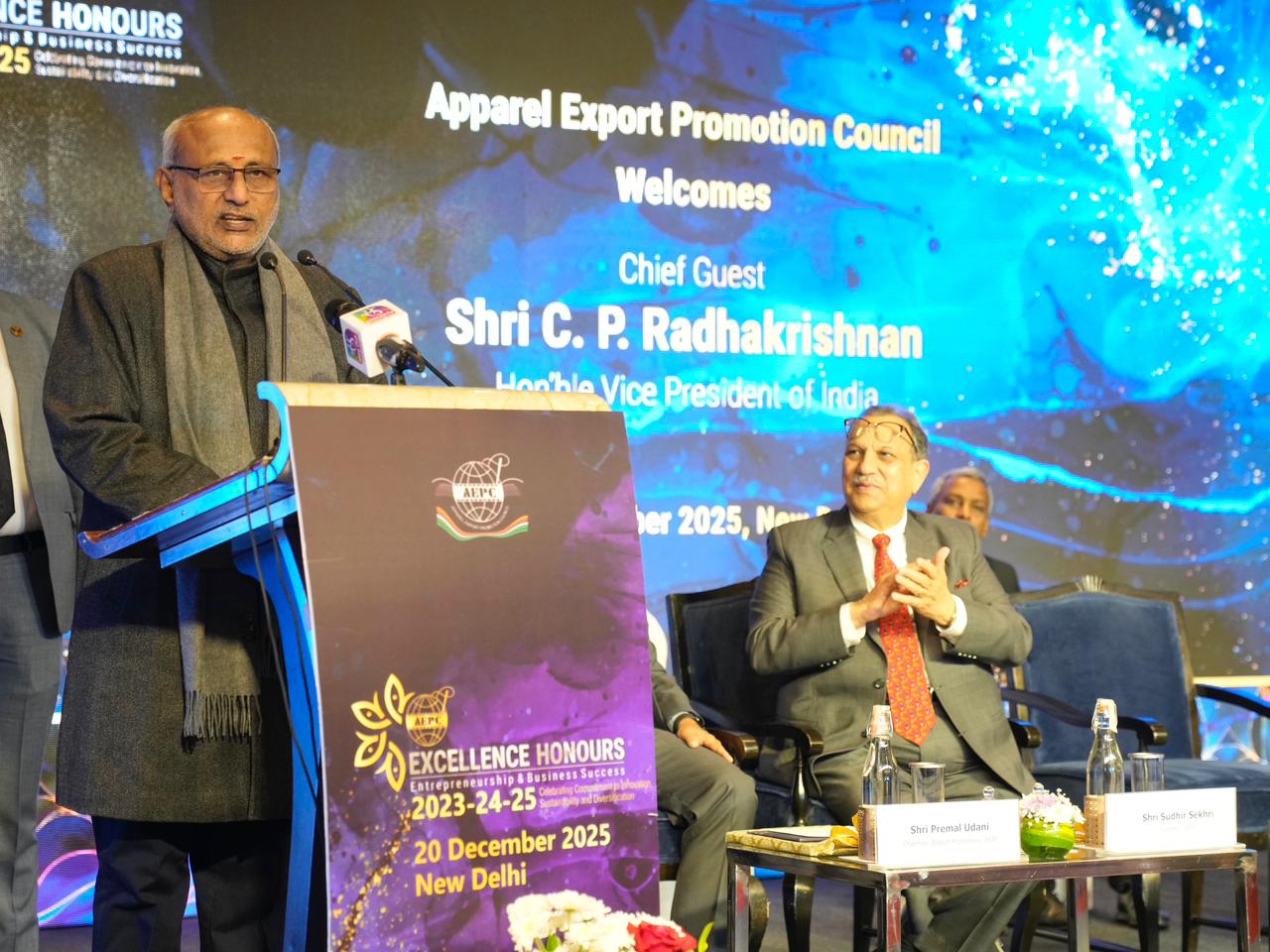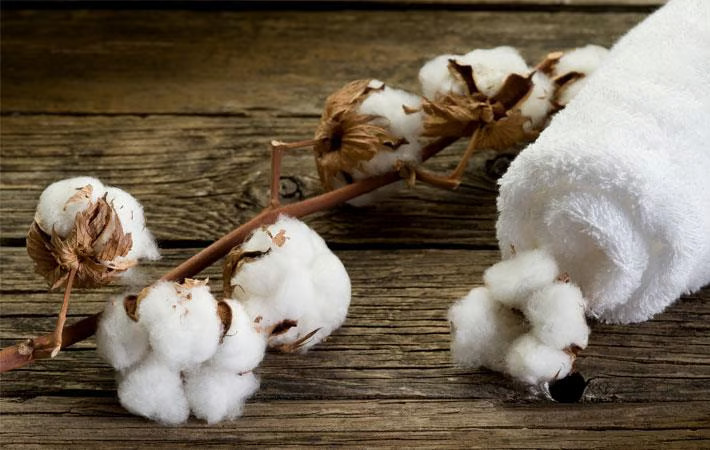FW
With 667 exhibitors from eight countries and buyers from 26 countries, Intertextile Pavillion, Southern China’s biggest apparel and accessories fair, concluded on a healthy note earlier this month. The fair, held at Shenzhen Convention & Exhibition Center saw many high-end brands including Crocodile, Diesel, G2000, Initial, Miss Sixty, Mothercare, Pepe Jeans London, Replay, s.Oliver and Zara. The exhibitors showcased a wide range of high-quality fabrics, knits, yarns, fibres and accessories at the fair, which witnessed 14,855 buyers from 26 countries.
Explaining the developments at the fair, Wendy Wen, Senior General Manager of Messe Frankfurt (HK) said, overall, the fair was good, though the number of visitors were lower compared to last year owing to adverse weather conditions. It was encouraging to see big brands not only from domestic markets, but also from America and Europe. This fair showed the strength in terms of quality if not in quantity. The participation by leading national and international brands clearly indicates that they were taking the fair seriously. The event has been considered a success because it drew applauds from exhibitors and visitors alike. The fair is seen as an ideal platform by players following the final edition of Interstoff Asia Essential in Hong Kong last year.
Regional brands are being promoted by industrial associations and also government organisations for products produced in a particular cluster. Thus, there is a geographical Indication (GI) recognition for some products such as ‘Made in Tirupur’ brand for garments etc. This helps facilitate direct export to the retailer or manufacturer abroad and create a brand value for the products in the particular area.
The idea of a common market place in e-commerce portals so that the products made in that cluster could be sold there, has also been debated by some industry associations. However, only some products have benefitted from this move. Manufacturers need to start looking at joint initiatives to create geography-specific brands, for this move to work better. The clusters have a large number of small and medium-scale units. Thus, if they have a common brand or a common market place, they would be able to offer higher volume of products for sale.
Nearly 50 to 60 per cent exports are from the manufacturer to retailer in Tirupur and there are different models of exports among the spinning mills. Some mills have selling agents in abroad, others sell to a trader and still others have long-term tie-ups directly with overseas manufacturers who offer some added benefit.
Readymade garment factory owners in Bangladesh are facing problems due to non-availability of gas for the last couple of years. Thus, both, BGMEA and BTMA leaders have demanded gas connections for the country's largest foreign currency earner on a priority basis. Garment factories are suffering because of lack of gas connections, especially, those who want to shift their non-compliant units from the capital to its suburbs are facing difficulties. Only because they were not allowed to shift their existing gas connection to the new destinations, alleges Bangladesh Garment Manufacturers and Exporters Association (BGMEA). About 64 non-compliant readymade garment factories failed to relocate their units. These are mostly located in shared or rented buildings.
The BGMEA stated that about 86 factories applied for increasing gas load, while 83 more applied for new connections. As per Bangladesh Textile Mills Association (BTMA), investment in 30 spinning mills remained unused and many more may not go for expansion for some years due to lack of gas connections.
To improve its workplace and other safety requirements, factories wish to relocate their units, but the government does not allow transfer of existing gas connections. Due to this, more than 250 textile and garment factories could not go into production and expansion, claim industry insiders.
Nearly 233 RMG units needed 50.92 cft gas for relocation, expansion and to operate the new ones, said the BGMEA President. Thousands of workers could get employed and $1.0 billion more could be added to the country’s export earnings if these units could become operational.
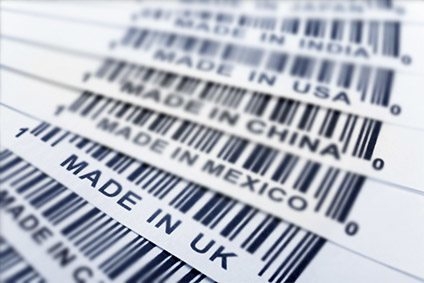
A Mckinsey study on the future of global apparel retail reveals the dynamics of the apparel industry are changing dramatically. To succeed amid shifting tides, companies need to build competencies. Companies, have to keep a tab on fast-moving fashion keeping them on their toes to be in sync with the trends and changes in consumer behaviour, who not only want to see a level of freshness in their products, but also in the entire shopping experience.
Boosting retail, tapping the consumer psyche

The size of global apparel business is growing and expected to generate double digit growth between now and 2020. Much of this growth is coming from developing markets, notably from the exploding buying power among Asian consumers, moving into the middle class and starting to view clothes as an extension and expression of their new lifestyle. These consumers are also increasingly travelling and shopping abroad.
By 2020, foreign spending of Asian-Pacific residents will triple, totalling $600 billion. In the luxury goods segment, 75 per cent of all sales will be from Chinese consumers, with more than half of that being spent outside China. There is double economic pressure on stores these days. On one hand, profit margins and sales per sq. mt. are decreasing while expectations are growing.
The joint study by authors Carsten Keller, Karl-Hendrik Magnus, Saskia Hedrich, Patrick Nava, and Thomas Tochtermann suggests shoppers increasingly want brands to speak to them with the same level of relevance, whether they are on an iPad or browsing in a store.
Apparel business hosts some of the world’s most rapidly growing companies. A number of smaller entrants, both online and offline are constantly growing, bringing their banner to global scale. Germany-based online retailer Zalando, for instance, has expanded its convenient, no-cost shipping, no-hassle returns brand of ecommerce to 15 countries in just six years.
Global trends to follow for successful retail venture
What can fashion companies do today to be among tomorrow's winners? The study discusses primary ways in which the world is changing and how these shifts will have a significant impact on the way brands and retailers do business. The McKinsey Trend Barometer-based on expert interviews, client studies, and industry reports, identifies seven global trends that point the way toward sustainable value creation.
Target groups change continuously, but within a few years, these shifts will spawn great diversity, the likes of which the world has never known. First, global population is aging rapidly: In the US, for instance, the segment of consumers over 55 is growing faster than any other – both in terms of their share of the total population and their expenditures for clothing. Second, global economic base of power is shifting from north to south and from west to east. Third, increasing migration is giving rise to new customer profiles.
Around the globe, fashion consumers are becoming more environmentally conscious. They expect ecologically unobjectionable fabrics, a conservation-minded use of resources, reduced emission of pollutants, greater social commitment, and fair treatment of employees in production facilities. In many countries, legislators are requiring companies to create more sustainable products.
Young fashion customers readily use a spectrum of digital platforms to get information on trends, exchange experiences, or compare prices. Within these customer journeys, social media plays a key role. Up to 35 per cent consumers indicate that they rely on recommendations from social networks.
Manufacturers, retailers, and service providers are compiling customer data at all kinds of new touch points. Based on this data, sophisticated algorithms can calculate the time, type, and scope of the customer's next purchase with high precision and probability. This can yield diverse ways of personalising advertising, new customer interactions, and product offerings. But prior to this comes the challenge of processing huge volumes of data in real time. Apparel brands and retailers need to first identify which data is most relevant and then have the capabilities and organisational structure in place to use it, something that inevitably requires an understanding of the relevance of IT and big data at the corporate level.
Segment polarisation has been a hot topic in discussions among apparel experts. The luxury segment in the UK, for instance, is booming at double-digit growth rates and the low-price value segment is growing at around 8 per cent – still double the rate for the market overall. Yet the hotly contested middle market also has winners, particularly in affordable luxury, which resides somewhere between the mass and luxury segments.
Against the backdrop of these trends, global fashion companies will need to develop new patterns for success to grow further, remain successful, or regain lost ground. In particular, they have to focus on global-local brand management, creating new shopping experience, store functioning, efficient supply chain and warehousing and appealing store design.
www.mckinseyonmarketingandsales.com
A new organisation, Child Labor Free, is working with influential advertising agency Saatchi & Saatchi to tackle the problem of child labor in the textile industry. There is already growing consciousness about manufacturing practices in the textile industry.
If Child Labor Free does attain a position of influence customers will soon see garments on retail shelves with a little red heart symbol on the label. The red heart will indicate that the garment was produced without the involvement of child labor. The intent is that customers will shun garments not bearing the label.
This means that for brands not sourcing T-shirts and other garments with the little red heart symbol on the label may have an adverse impact on sales. Brands applying to use the Child Labor Free mark will have to provide manufacturing, component and sourcing information, along with evidence that child labor is absent in their supply chains. Child Labor Free will then evaluate the report, which may include recommendations for site inspections if deemed necessary.
Eliminating child labor in the textile industry is of course a noble cause, but success will ultimately depend upon the response of the average consumer.
Swimwear, one of the categories in the global fashion industry, with high potential for growth has risen to great heights in the last decade. Ease of travel to beach destinations, increasing attention to health and fitness and rising popularity of beach culture and water sports, are the reasons for the sectors growth. Now, swimwear has transcended from being a summer-essential to an essential for every wardrobe.
Swimwear designers have become more creative and to meet customer’s demands. With a rise in demand for swimwear, the Colombo Fashion Week (CFW) introduced Swim, presented by OLU Tropical Water. This aims to be Asia’s foremost platform for showcasing latest trends and developments in swimwear.
CFW Swim, a technical collaboration with Linea Aqua, showcased latest collections of Sri Lankan and international swimwear designers and manufacturers. The show gave them regional exposure and connected them with important buyers. In the Eastern hemisphere, each year, CFW Swim will serve as the most important showcase for swimwear. This would be on par with major swimwear destinations of the world such as Miami and Rio de Janeiro.
International and Sri Lankan designers and manufacturers of swimwear will be able to feature their latest collections at the show and thus will be able to build strong relationships with buyers, media and consumers in the region. Therefore, CFW Swim will help designers build strong swimwear brands and maximise sales and revenue. It would also contribute to the overall growth of the global swimwear industry.
As part of its technology upgradation program, Birla Century has installed a fabric spreading system which consists of a spreader and table. This Morgan Fusion spreader is based on the latest generation technology and electronic components to provide highest efficiency in spreading all types of fabric. Highly energy efficient, it accurately aligns fabric edges at both ends.
The table, with a modern design perforated surface, is equipped with blowing fans to shift the layered mass quantity of fabric from one end to the other in an efficient manner. It is suitable to spread 30,000 meters of fabric a day on the table.
Thanks to its unique camera system, even colored warps are recognised, and the pattern can be programmed via download from a textile CAD system. This results in high production with good warp quality.
A doubling and twisting unit with a monthly capacity of 90 tons was commissioned in December to cater to the embroidery yarn segment. The unit houses 20 state-of-the-art machines and a complete hank facility with heat setting. Plans are underway to increase the unit capacity to 150 tons by October.
Century Denim has set up a new pilot sampling plant. This facility is not only helpful for creating an up-market collection to offer to a niche segment but also for developing innovative fabric samples in the shortest time.
www.birlacentury.com/
Thailand-based Indorama Public Company Limited (IVL) a leading integrated global producer of polymers, saw a rise in sales revenue to 61.2 billion baht, with a record production of 1.8 million tonnes. This was on the back of higher utilisation rates and additional volumes from new acquisitions.A world-class global corporation and management is what IVL’s scale and business model pursues to build, which in turn would be focussed on excellence and governance in a sustainable way. IVL has proved its resilience and met industry challenges with a healthy core. IT has reported baht 7.2 billion profits before tax and after non-controlling interests for the last 12 months ending 2Q15. IVL achieved strong Operating Cash Flow of baht 24.8 billion on a record production of 6.6 million tons, during this period.
IVL has been successful in building a portfolio of niche businesses, which are hard to reproduce. Following its acquisitions in 2015, IVL’s capacity grew by one million tonnes to reach 8.5 million tonnes. This would further grow 700,000 tonnes in the second half of the year under its ongoing M&A CAPEX plan.
The Brazil International Yarn and Fabric Show took place from May 27 to 29, 2015. The three day fair showcased all kinds of cotton and synthetic fabrics commonly used for the clothing industry from wovens to knits as well as home textiles. The show was aimed at the markets of Brazil, Argentina, Chile and Peru. The textile and fashion industry in Brazil comprises 30,000 factories, producing 9.5 million garments every year. It represents 10.6 per cent of all employees in the Brazilian manufacturing sector. The sector is also the second largest employer in the country and the fourth largest exporter in the world.
As one of the BRICS countries, Brazil is the fourth largest market in the world for textiles after the USA, China and Japan. It is a very promising market for textile and apparel exports from Asia.
The Brazil International Yarn and Fabric Show (BIFS) was a good networking marketplace for international yarn and fabric manufacturers and Brazil textile import businesses and presented the latest fabrics and trends. Among the product groups exhibited were artificial leather, buttons, CAD, CAM, coated artificial fur, cotton, denim, embroidery, fancy finishing, fibers, fleece, hangers, home textiles, interlining, knitted fabrics, labeling systems, natural fabrics, snap fasteners, synthetic fabrics, weaving ribbons, yarns and zippers.
India is targeting 11 per cent rise in clothing exports this year. The country’s garment exports were up 12.2 per cent compared to last year. However, in the first two months of the current fiscal, growth rate in apparel exports slowed to just seven per cent from a year earlier. The country’s overall textile and garment exports grew roughly five per cent in the last fiscal, but is still lower than the official target of $45 billion for 2014-15.
The government has set a target for textile and clothing exports at $47.5 billion for 2015-16. However, achieving this target would be difficult unless the government provides adequate policy support, including subsidies, especially after the abolition of certain export subsidies as announced in the recent foreign trade policy for 2015-20.
With demand from crisis-ridden Europe, which accounts for almost 41 per cent of the country’s garment exports, remaining tepid and the chances of a FTA with the EU in the current fiscal still remote, shipment target for the current fiscal would be hard to achieve, especially in view of stiff competition from countries like Vietnam, Bangladesh and Cambodia.

